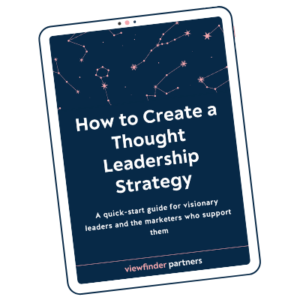In an ongoing attempt to spend less time on my phone, I’ve been doing some Internet Experiments.
Namely, a month ago, I deleted Instagram (my #1 time-sucking app) from my phone. Instagram was the only personal social media I had left. I stopped using Facebook years ago. I left Twitter when the Elon sagas started. But there was still a lot of content I thoroughly enjoyed on Instagram: pictures of my friends and their kids, useful parenting ideas, cooking inspiration, politics, news, and culture updates that made me feel like I knew what was going on in the world, and some of my niche interests like DIY home projects. But I didn’t like how addicted I felt to Instagram, and I wasn’t actually staying in touch with my friends there — we were just liking each other’s photos and sharing a tiny, edited views of our lives.
And here was a bigger problem: the ads were bumming me out. As an unavoidable side effect of using Instagram, I saw many ads every day about how I should fix my almost-forty-year-old skin, face, and body…and things I could buy to be better, shinier, and happier (spliced in quick succession between all of the things I liked seeing, listed above). Updating my ad preferences (fewer weight loss and anti-aging ads, please) had zero effect. I hated the way those ads made me feel.
When I considered my next move, I was encouraged by other people’s conversations about deleting social media. (Here’s what I read: 6 Things I Learned from a Year Without Facebook and Instagram by Lindsey Pollak; Ten Arguments for Deleting Your Social Media Accounts Right Now by Jaron Lanier and this GQ interview with Jaron – found via the podcast A Thing or Two).
When I realized that I couldn’t get the content I liked without also seeing all the ads I didn’t like, I deleted the app.
What the original generation of bloggers can teach us about consistently showing up
So I deleted Instagram. But I still like knowing what’s going on. How could I stay tuned in to the topics that interest me without using a social media platform? My answer so far has been blogs. Yep, I’m going back in time, trying to set up camp in the simpler days of the internet, when bloggers published their writing regularly on actual websites (not on YouTube or Facebook or Twitter or TikTok or LinkedIn or Instagram).
Way back in 2008, I loved using Google Reader (R.I.P.) to follow my favorite blogs. My 2023 replacement is Feedly, where you can follow any website with an RSS feed. I’ve been searching for some of the old blogs I used to read, and while many of them are defunct or have mostly moved to social media, some of them are still! Around! And publishing very regularly, ten or fifteen years after I first discovered them.
What does this have to do with thought leadership? For me, it’s the power of showing up consistently over time. When I saw my feed full of bloggers, writers, thinkers, and trend-watchers who had been publishing every day, week, or month for years and years, I was struck by how they kept showing up. Their work isn’t perfect. Every post isn’t going to win awards. But they’re clearly publishing as a creative practice.
A few of the still-standing blogs on my list: Cup of Jo, Shutterbean, swissmiss, and smitten kitchen. I can also use Feedly to follow the many, many good Substack newsletters that have cropped up, like Anne Helen Petersen’s culture deep dives and Roxane Gay’s curated takes.
How to keep showing up as a thought leader
Thought leadership works the same way. Most people don’t spontaneously generate an industry-changing idea on their first try. They think in public consistently over time. They keep showing up, working through their ideas, reflecting on their experiences, and inviting feedback and criticism. They keep showing up.
- Seth Godin is an obvious example. Say what you will about his Yoda-like, pithy posts about marketing – he shows up and practices every day, and he has for thousands of days. (And I didn’t realize until writing this that his latest book is literally called “The Practice: Shipping Creative Work.”)
- Another example: Stephanie Nadi Olson, founder of We Are Rosie. I often point to Stephanie as an example of a thought leadership “beacon.” The power of her work as a thought leader is that she’s constantly showing up, beating the drum about building a saner, more flexible way to work. I hear and see her everywhere. Just today, she popped up as a guest on Work Appropriate, a podcast from Crooked that I like (btw, it’s a really good episode on setting work “boundaries” — or not).
I’m not advocating for some kind of hustle culture where you can’t take a day off. But I do see the clear value of committing to a practice and knowing that your best ideas will rise to the top through the process of putting in the reps and thinking in public over time. The value of thought leadership isn’t going viral with one clever social media post. It’s about building a body of work over time and being brave enough to evolve your thinking in front of an audience.
There are all kinds of financial and audience-growth reasons that any professional writer shows up consistently for years, but as a reader, I’m just happy they’re still doing it, especially when it means I can take a break from social media while still staying tethered to new ideas.
By the way, this idea of “keep showing up” applies to so many realms beyond writing. It applies to relationships, too – managing people, parenting, friendships. We all get a new chance every day to show up as the versions of ourselves we’re most proud of.
My question for you, whether you already have a thought leadership practice or you’re interested in building one: How will you show up?






